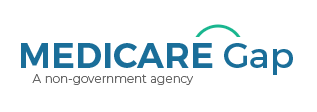What Is Dual Eligibility?

In today’s day and age, it seems that the costs of healthcare are rising every single day. As healthcare prices continue to rise, and not everyone’s financial situation rises with it, more and more people are seeking assistance and researching their options. For those who are struggling, or have certain qualifying circumstances, Medicaid and other Medicare Savings Programs can be life saving options.
According to medicare.gov, “Dual Eligibility” means that a beneficiary is able to receive both Medicare and Medicaid benefits. The two programs cover many of the same services, however Medicare pays first for Medicare cover services and may not cover everything. Medicaid covers services that Medicare doesn’t cover, for those who are on a limited income or may have a disability or other qualifying condition.
What’s The Difference Between Medicaid and Medicare?
Medicare is a federal health insurance program offered to U.S. citizens who are 65 and older. Younger people with disabilities, as well as as well as some younger people with disabilities who are on Social Security Disability Insurance (SSDI). People with renal disease who require dialysis are also eligible. Medicaid is a program specifically designed for those who qualify due to certain circumstances, such as:
- Persons who are 65 or older
- Qualifying children under 19
- Pregnant women
- People living with a disability
- Low-income families and individuals
Dual Eligibility Benefits
If you have Dual Eligibility, you will be enrolled in medicare Part A and or Part B, and in Medicaid, or in another Medicare savings program. This allows you access to full benefits that are covered almost or entirely with no cost to you. This includes costs such as premiums, deductibles, coinsurance, copayments, and other out-of-pocket costs, depending on what program you are enrolled in.
Dual Eligibility Categories
The dual-eligible population falls into two groups—“partial duals” and “full duals”—depending on the level of Medicaid benefits for which an individual is eligible. This gets a bit murky and confusing, but here’s how Medicare.gov breaks it down:
Duals can fall into several MSP categories that offer various benefits, impose certain restrictions, and differ based on income:
- QMB program. This program supports the payment of Medicare Part A, Part B premiums for individuals with an income of 100 percent FPL.
- QMB Plus. This group receives QMB benefits and full Medicaid benefits.
- Specified Low-Income Medicare Beneficiary (SLMB) program. This program supports the payment of Part B premiums for individuals with an income greater than 100 percent FPL but less than 120 FPL
- SLMB Plus. This group receives benefits from the SLMB program and full Medicaid benefits.
- Qualified Disabled Working Individual (QDWI) program. Individuals who lost their Medicare Part A coverage when they returned to work can buy back these benefits and have an income up to 200 percent FPL.
- Qualifying Individual (QI) program. This group receives Medicare Part A benefits and has an income of 120 percent FPL but less than 135 percent FPL. There is also an annual cap on the money available for this group.
- Pharmacy duals. Medicare Part D covers premiums, deductibles, and other cost sharing for prescription drugs up to a regional benchmark for all duals.
- “Other” duals. This group includes select cases such as medically needy beneficiaries in a nursing home who are not eligible for prescription drugs or individuals in a state’s Pharmacy Plus demonstration. States should use the code for this category only with CMS’s approval.
Medicaid income qualifications, covered benefits, and restrictions depend on the category into which a dual eligible falls.
How Do I Apply?
If you feel you meet the eligibility requirements for Medicaid or Dual Eligibility, you can contact your state Medicaid agency. You must be a resident of the state where you are applying for benefits. Once you have done this, if you feel you qualify, you can visit medicare.gov and fill out an application through the Health Insurance Marketplace.
Understanding your coverage, the amounts you are responsible for, and changes to these amounts can be very confusing. Having the assistance of a qualified health insurance agent can provide the help and advocacy you need to navigate your health plan, and give you the peace of mind that comes with getting the care you need at an affordable price.
